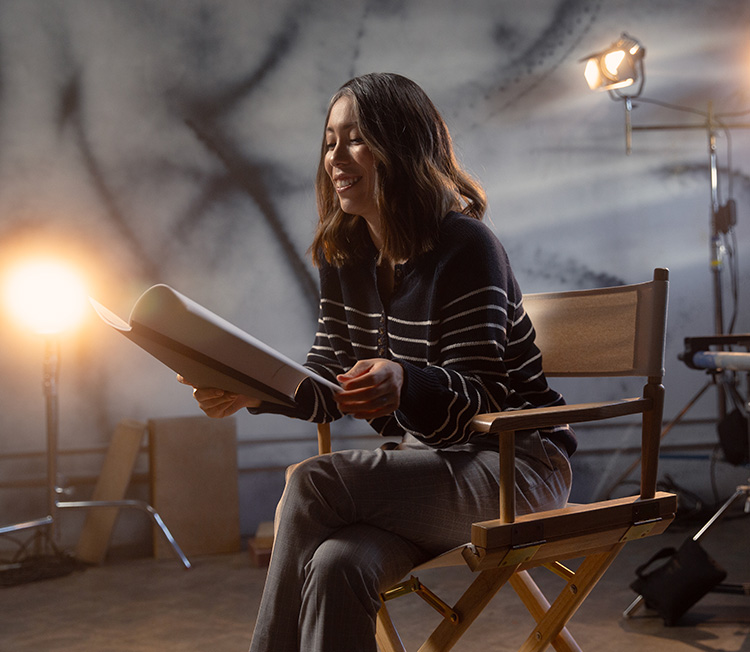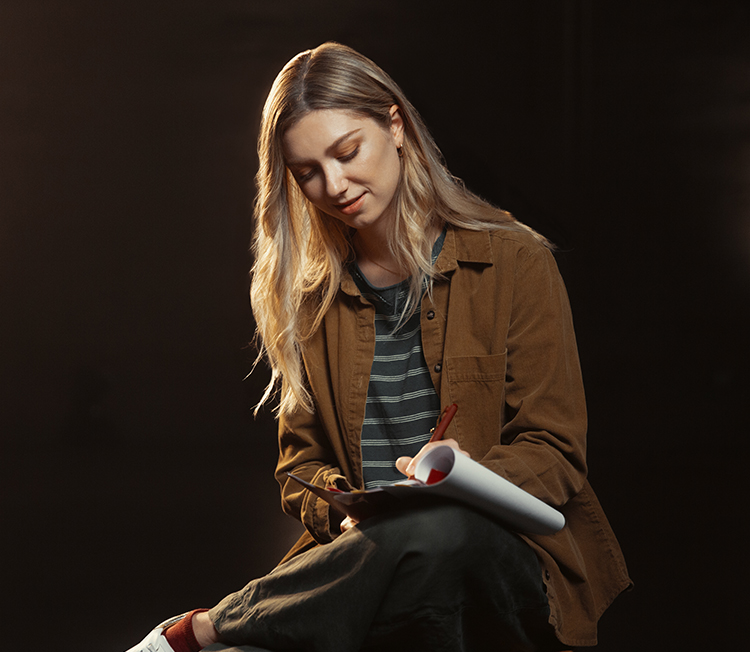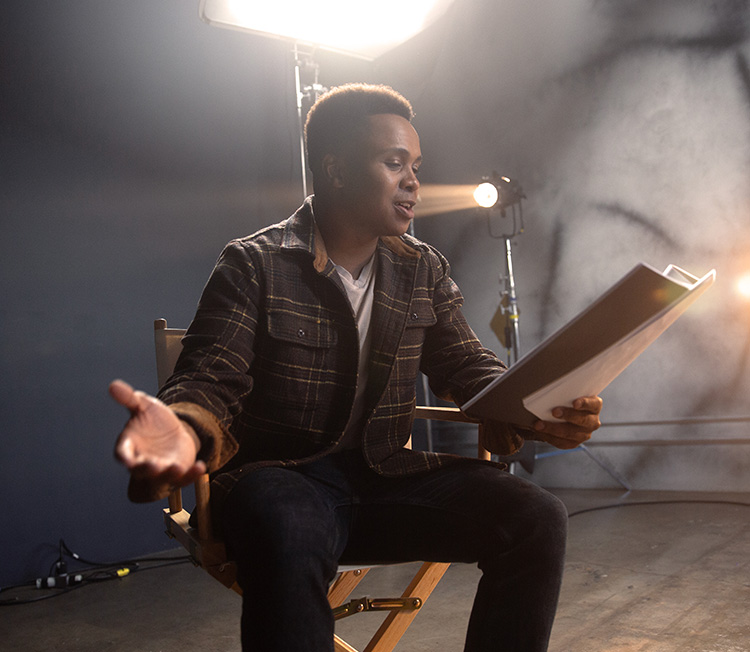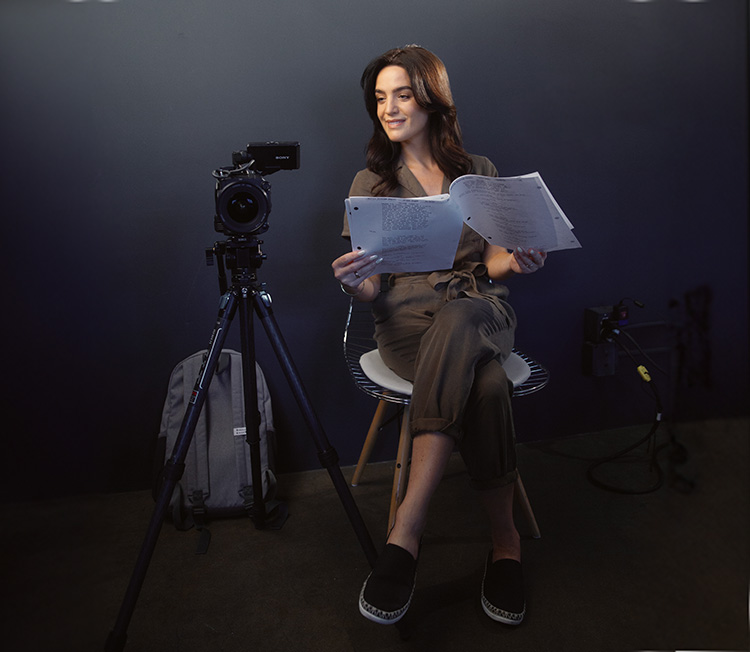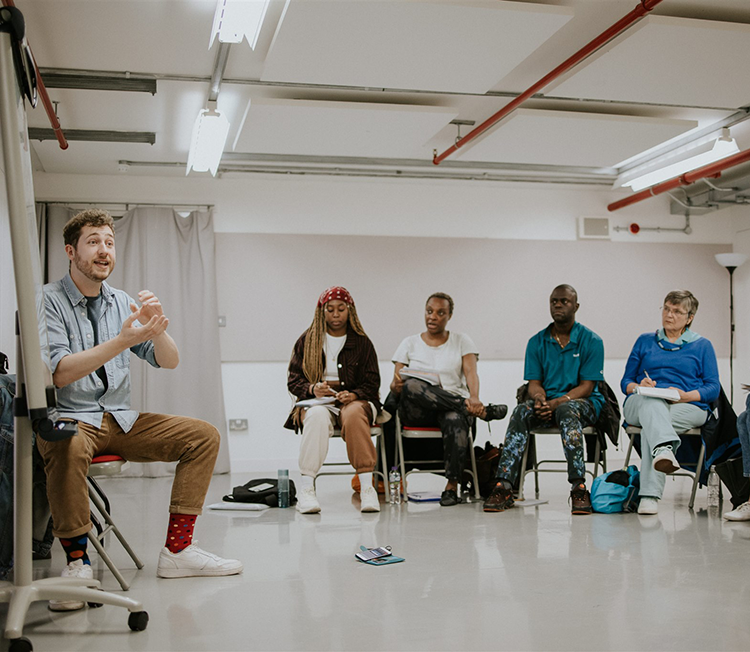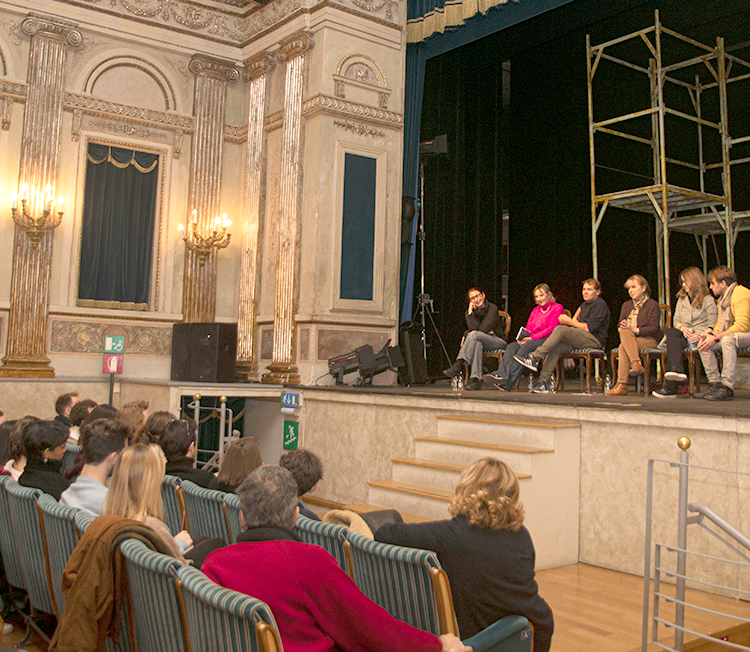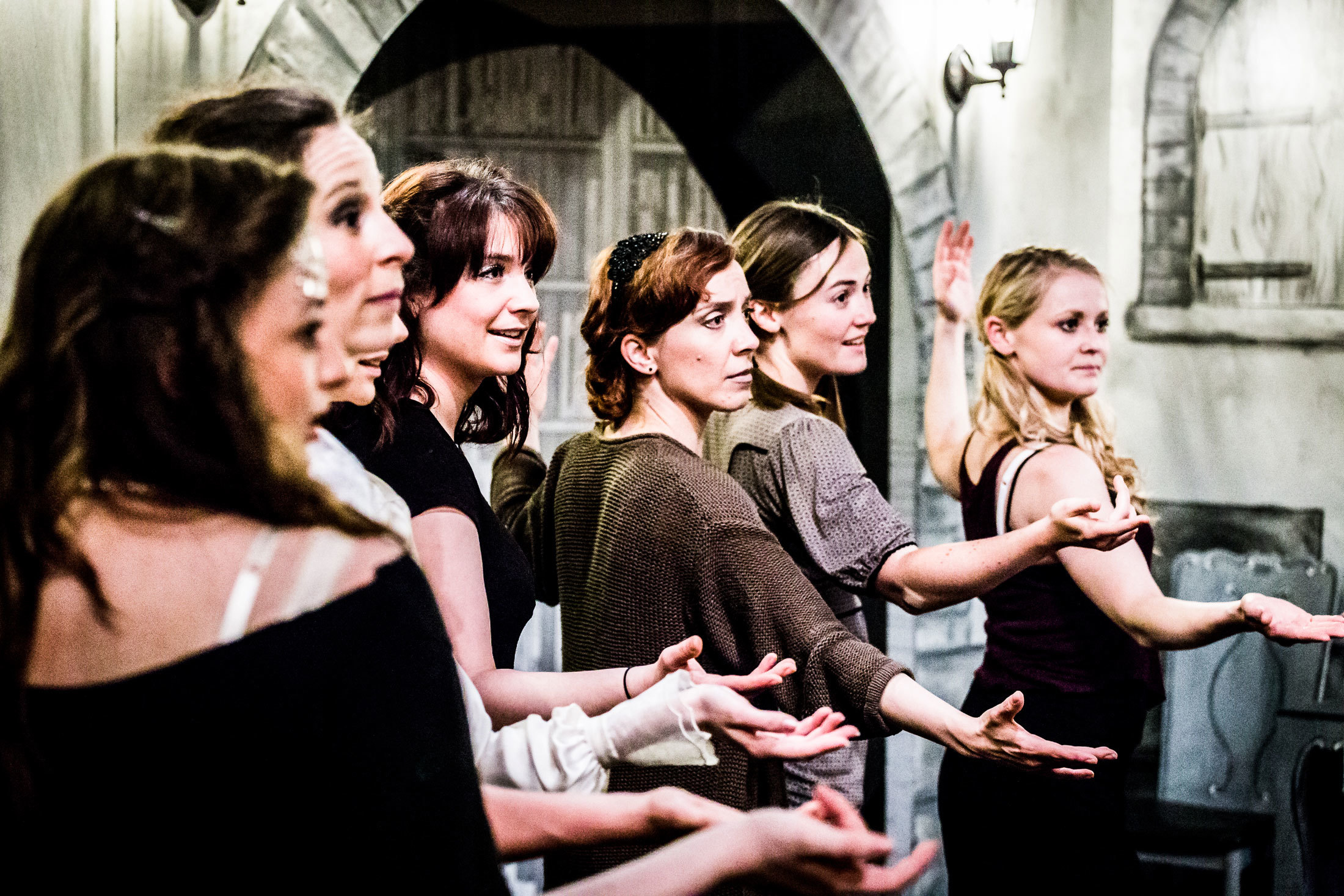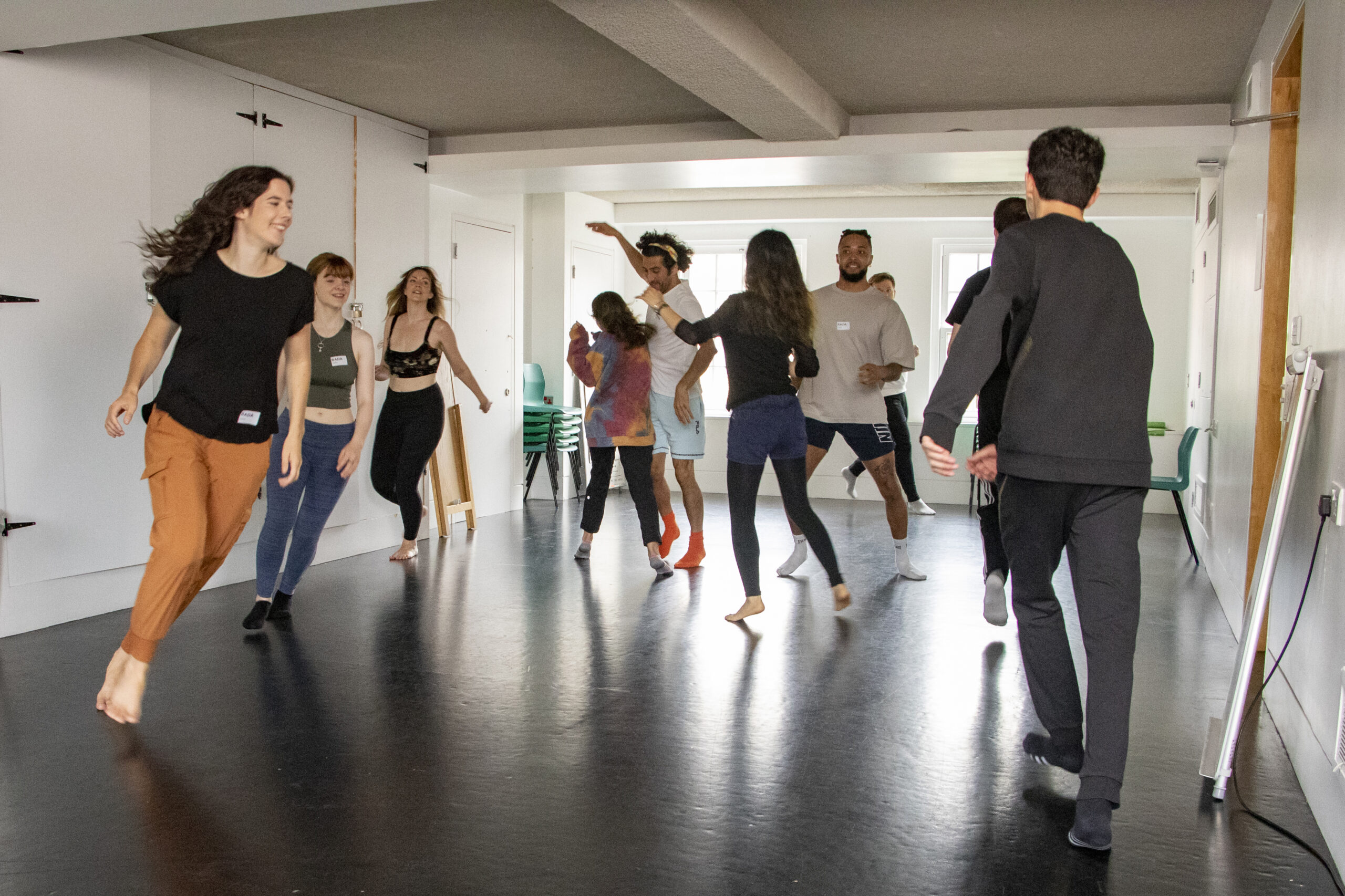The ins and outs of performing rep theatre!
What do Dame Judi Dench, Sir Ian McKellen, Imelda Staunton, and Vanessa Redgrave have in common – other than being some of the best names in the biz? They all began as actors in repertory theatre. For those privileged to have experienced thorough drama-school training, the challenges of performing a variety of parts over a short period might be well known. But for any young performer looking to gain the experience and depth of skills on stage, rep theatre offers a fantastic foundation.
Local rep theatre company Arrows & Traps put on five productions a year with their core cast, fresh faces always being offered the chance to join their fine productions. Resident director Ross McGregor recently gave up his time to chat to Spotlight about the particular challenges of rep theatre, their latest production and how you too can get experience performing quality work across London!
Starting from the top: what made you want to set up a rep theatre group?
There’s a lot of fringe groups and companies out there – some do Shakespeare. But the rep theatre style was something I didn’t really see a lot of. If you go back to the start of the Royal Shakespeare Company and all the great actors we have now, who are probably in their 60s and older, they started in rep. It was a great training ground to be able to be in a core group of actors that would grow, adapt and change. You would have a core group of ten, play a variety of roles – I think the important thing is to produce work on a regular basis, and that interested me, more than the kind of plays you do. Though that has ultimately meant Shakespeare (for us). But the rep style was what I wanted to try and bring back, because I found that interesting.
It is interesting! I’ve really enjoyed seeing your actors grow and develop over various productions of yours. What did you look for initially from your core group of actors?
Well the first four plays we did were all Shakespeare – we did Much Ado About Nothing, Winter’s Tale, The Taming of the Shrew and Titus Andronicus. So, to start with I was interested in people who would approach a text in a clean and clear way, who could get through these old words and phrases that nobody uses anymore and turn them into something that sounded new. It had to be an approximation of speech instead of just an old text being recited. That’s what we looked for to begin with, and as it evolved, we started to see a style emerge – it was quite ensemble-based, lots of movement work – techniques that sort of became a framework. We then wanted actors who would either suit that or who would be keen to learn.

What about gender-swapped parts – it’s a thing you have done a few times! What’s the thought process behind gender-inverted roles?
I am a massive fan of more opportunities for actresses in theatre – theatre’s very heavily skewed on one side of the spectrum, and Shakespeare is a massive issue on that front. However, I do think it has to be done for the right reasons in the play. So, in Taming of the Shrew, we gender swapped everyone. The whole world was run by a female-orientated society.
Do you make those choices then go out and cast? Or have you cast openly for either gender?
Both. [For Othello] Iago was open to either a man or a woman. [In Macbeth] Banquo was decidedly female, then we found an actress for the part.
Iago is a bit of a rare case in the sense that the character never really gives a concrete reason for why he does all the awful things that he does. He is just a psychopath. So, a performer approaching Iago could choose any style and we would have been open to seeing it.
How do you decide who plays what part from your core? Are you deliberately pushing your actors into very different roles?
There’s quite a tense period before each new show when the Arrows have to tell me whether they want to be in the next one. Sometimes we do an informal reading, sometimes we don’t. I do push the actors into new roles. Cornelia (Baumann), for instance, had favoured straight, drama based, roles and it’s something she does really well. But she’s very amusing anyway, and it wasn’t something we’d ever had on stage [she then played Olivia in Twelfth Night]. So, I did want to stretch her into different tropes. And I think casting – when you have your headshots done, they tell you you’re “the girl next door” or “the baddie” and you get stuck in these tropes. I think it’s unusual to be able to say well, you’re going to be in six shows in a year but each will be a different kind of trope.
It’s definitely something you get to explore more in rep. How do you then weave in new actors?
Once you’re in Arrows & Traps, if the role is right for you, we would have a chat. If it’s something big – so Iago, for instance – you may have to read, but I offer to both the Arrows and to new people, to keep things fresh. We have had a few instances where I thought certain roles would be great for certain members of our core, but I would never just keep all our cast identical. We always thread through new faces.

A practical question now for emerging performers: do you encourage your performers to bring potential agents to watch them?
Absolutely. Several of our core have found representation through their performances with Arrows & Traps. There is that innocence about drama school that you’re going to do your showcase and instantly be picked up, and that isn’t always the case – not when you’ve got to give a role to everyone in that year for a showcase. If you’ve got to be a tree or something, it’s hard! It’s become easier to get agents recently from A&T productions as our roles are bigger – you won’t be a third spearman on the right! It will be a proper test, where you can show off your skills.
Speaking of testing your performers: there must be a lot of challenges in rep theatre, particularly when you put on Othello and Twelfth Night – your performers were switching every day (sometimes performing both plays in a single day!). What were some of the challenges there?
They certainly found it difficult in some instances to switch between the plays. In most cases the actors were in pairs in both – so you were playing against the same person, but your relationship was completely differently. For example, Pearce (Sampson) played Orsino [in Twelfth Night] and Iago [in Othello], whilst Pippa (Caddick) played Viola and Desdemona – in one they’re falling in love, and in the other he’s arranging her death! We set one in the modern day and the other in 1602, and that influenced how we thought about the delivery of those lines. We created a bouncier rhythm of line delivery for Twelfth Night, and a more “broken up” rhythm for Othello to help separate the feeling of each play.
What’s it like then in rehearsals with your performers? What sets the rep experience apart?
There are different ways to direct so it’s really two-pronged. With the rep element, I can do a bit of a shorthand, so I will know that a specific actor might approach things on a psychological bent whereas another actor might need to be up, go through all the moves and get the scenes in their feet. You can learn the best way to suit their style and tailor the approach to speed things up.
Otherwise, a general helpful way to approach things is to view the rehearsal room as an easy, safe and open place where you can see what works – just try things out. I want to ensure the cast feel that they aren’t always being judged, because then they won’t try weird or exciting things, if they are scared I’ll say it’s awful. I encourage them to play, then after a while we’ll trim and get it to suit the story, but it must be a safe place first. I’ve tried being more dictatorial but then it just becomes my view of how the play should go. If you allow other people to add their views, it becomes a stronger piece as it becomes more layered.

Is there anything else you would recommend a young actor know about tackling Shakespeare for the first time?
It’s not meant to be heightened; it’s not meant to be austere. It’s meant to be actual speech. I think if Shakespeare were alive now, he’d vlog. He did the popular art form of the time. I’m a big fan of putting screen work into Shakespeare or updating it and turning it into something new. So, if you can make the speech we hand you sound new, then you’re in for a good chance. If I can understand you in one go, brilliant.
On that note, your latest production isn’t Shakespeare at all! Tell us about Crime & Punishment – what made you want to do this play?
We had such a grand idea last time of putting on Othello and Twelfth Night at once – there was no arts council, we did it off our own backs – so I thought I would like to strip it all back and do something new. Crime and Punishment is just three actors, one table, a few chairs – it’s just acting without the frills and it’s been a really interesting experience. I hope it will still feel like an Arrows show!
Crime and Punishment is the Arrows & Traps Theatre Company’s latest production, on at the Jack Studio Theatre from 7th to the 25th February 2017. Book now!
Image Credits: Davor Tovarlaza, The Ocular Creative

